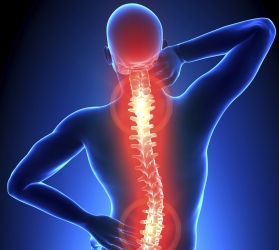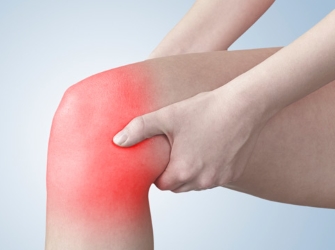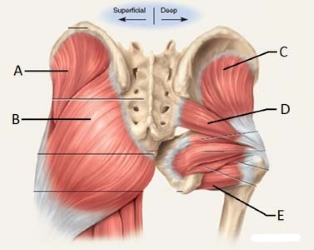If you get pain after horse riding you’re not alone. Whether it’s hip pain, lower back pain, knee pain, inner thigh pain, sore legs or even a sore bum. But it might not be your technique that’s the problem. Horse riding can create muscle problems but it can also make existing ones worse. It doesn’t matter if they originated at work, while mucking out stables, or from poor posture in general, horse riding can exacerbate them. So let’s take a look at a few common reasons for pain after horse riding. As well as what could be causing them and how to treat or even prevent them.
Table Of Contents
Hip Pain After Horse Riding
Hip pain after horse riding is a result of riding position and tight muscles at the top of your leg. Although mainly on the outside of the hip, the discomfort can extend to both the front or back. Regardless of your riding style, the constant shortening of the tensor fascia latae and gluteus medius muscles due to an unnatural position is the primary culprit behind the discomfort. Basically the bigger the horse, the greater the distance between your feet, and the worse it is for your hips. Also, prolonged sitting, particularly with poor posture, compounds the hip strain. Whether this is at a desk, driving or watching TV, your hip muscles are in a shortened position.
Treatment And Prevention
There is little that can be done to alter your riding position but regular stretching of the affected muscles can help to keep them flexible. Unfortunately knowing exactly which muscle is the problem and how to do the appropriate stretch effectively isn’t easy. And sitting all day and riding demands more than just a few minutes of stretching to address bad posture anyway. A deep-tissue sports massage at home from a qualified massage therapist is the best answer.
Lower Back Pain After Horse Riding

Lower back pain after horse riding can, like hip pain, be caused by being seated for long periods. But that doesn’t mean that horse riding isn’t also responsible. If your upright posture comes more from arching your back than correctly engaging your postural muscles then you are causing the muscles of your lower back to become tight. As well as this, your spine isn’t able to act as a shock absorber each time you drop back into the saddle when you ride(1). This can further exacerbate muscle inflammation which can press on your sciatic nerve, leading to sciatica.
Treatment And Prevention
Like hip pain, reducing the amount of time you are sitting down can help lower back pain. If you’re just getting the occasional twinge after riding, stretching your upper thigh, hamstrings and glutes (bum) can help. The goal is to be flexible enough to maintain an upright posture using your core muscles in your abdomen. This probably means you’re going to need to do some core exercises to get them up standard. If you’re not just getting lower back pain after horse riding but find it’s a more chronic issue that affects you throughout the day, massage is the better option. If left untreated it could go on to develop into sciatica or even a slipped disc. And this could keep you out of the saddle for several weeks.
Upper Back Pain After Horse Riding
If you have upper back pain after horse riding the cause is having a slumped posture. This can be while standing, while sitting or while riding. Instead of sitting upright with arms and shoulders relaxed, riding, driving, computer work or even mobile phone use puts your upper back into a more rounded position. Having your arms forward, such as driving or riding, shortens muscles in your shoulders making a proper posture more difficult. This can also lead to neck and shoulder pain after horse riding.
Treatment And Prevention
The first thing to address if you have upper back pain after riding is your general posture. When you’re standing keep your back straight, your shoulders relaxed and your head up. Computer work and mobile phone use means your head is down looking at a screen, weakening you neck muscles. So the same applies when sitting down. Maintain an upright posture which has your spine in its natural, neutral position. Stretching can be of some benefit to easing neck pain, but it is difficult to effectively stretch the upper back or shoulder area. A deep-tissue massage can lengthen and relax the muscles in the upper back and shoulders, making it easier to maintain a correct posture on or off your horse.
Inner Thigh Pain After Horse Riding
Inner thigh pain after horse riding is one issue not directly caused by being in the saddle. Instead this can actually lengthen your adductors and other muscles of your inner thigh. The problem comes, once again, from long periods of sitting or standing, combined with the hard work your inner thigh muscles continuously have to do while you are riding. Although squeezing with your legs might help to keep you in the saddle, it also tightens the muscles. In turn this can affect your hip alignment making a good riding position difficult and go on to cause lower back pain.
Treatment And Prevention
Like hip pain, inner thigh pain after riding comes from being in the saddle with your legs around a horse. No change to your riding technique can help. Instead, regular stretching of your inner thigh muscles, like doing a beginners version of the splits, can help with flexibility. If you’re already getting inner thigh or back pain after riding, you’re going to need some deep-tissue massage first. Relaxing your tight adductors, shortened hips and hip flexors will go a long way to help. It will also ease or prevent associated lower back problems.
Knee Pain After Horse Riding

Knee pain after horse riding generally has 2 main causes depending whether it came on suddenly or gradually over time. If it was sudden, especially after a fall or abrupt movement, it is probably a strain or tear. This could be to a muscle, tendon or ligament and should first be checked out by a doctor to establish severity. If it came on gradually, especially after riding, the cause is more likely to be tight muscles in your leg.
Treatment And Prevention
Where your knee pain is offers a good guide as to which muscles are causing it. If it’s at the front it’s probably your thigh muscles that are tight. The inside your sartorius or hamstrings, the back your hamstrings or calf. While the outside of your knee is most likely to do with a tight IT band. Fortunately, consistent and correct stretching can effectively resolve early-stage tightness in your muscles. But to be sure you’ve identified the right muscles and they are getting sufficient attention, a deep tissue sports massage is the answer.
Sore Bum After Horse Riding

A sore bum after horse riding means you’re getting sore glutes, which is what the buttock muscles are called. The main muscle of the glutes is the gluteus maximus, with the gluteus minimus and medius beneath it. Their main job is to help you straighten up after bending forward as if to touch your toes. But lifting your leg out to the side and stabilising your hips is also part of their roles. As with hip pain after horse riding, a sore bum comes from your glute muscles being in a shortened position. As usual, this can also come from sitting down for long periods. Unfortunately the glutes are often are often weak or not working correctly but frequently neglected as a source of lower back and hip pain.
Treatment And Prevention
Tight or weak glute muscles can also get lazy and force your lower back to do all the work instead. Therefore, given the amount of work it’s already getting when riding, proper glute function is important. Stretching can help to keep the gluteus maximus loose but the deeper muscles will probably require some massage work. This is especially likely for horse riding due to the strain placed on them.
Horse riding doesn’t have to be painful, or leave you with aches and pains for several days after. With some deep tissue massage to get you started, regular stretching can keep your muscles loose, relaxed and flexible.
Book A Mobile Massage
If you would like to book a mobile massage in York please contact me on 07713 250352 or email david@massageinyork.co.uk. Includes sports massage, deep tissue massage and Swedish massage. For more information on booking click here
